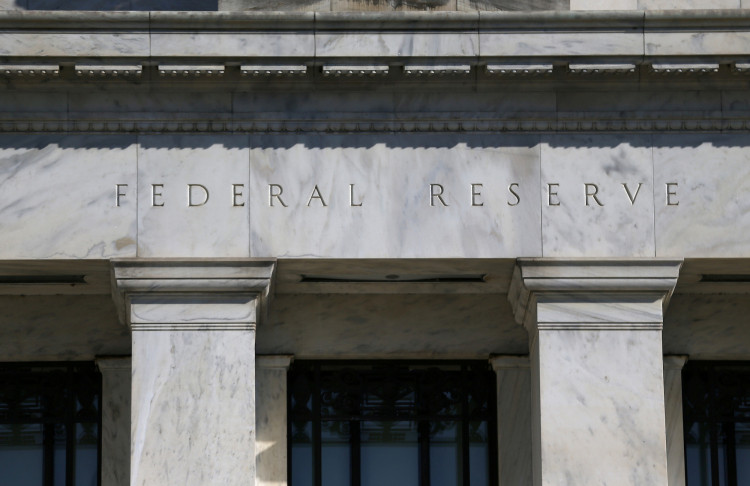Despite the U.S. stock market's continued rise following the Federal Reserve's signals of potential rate cuts in 2024, the real-world economy is still grappling with the ongoing pressures of previous rate hikes.
Over the past two years, major central banks globally have aggressively raised interest rates to control inflation, leading to tightened market liquidity. This has resulted in increased borrowing costs for governments, businesses, and consumers, which is expected to continue suppressing spending well into the next year. Some studies suggest that the coming year might be the weakest non-crisis year since the early 2000s.
Even if central banks manage a soft landing for the economy, the upcoming wave of debt maturities in the next few years could still pose a significant challenge for some businesses. The refinancing costs might remain prohibitively high, potentially leading to defaults and losses for lending institutions. Consumers are already feeling the pinch of tighter credit access, and regional banks are facing substantial impacts from declining commercial real estate valuations.
The question now is whether central banks, which previously underestimated the threat of inflation, might be too slow to cut rates, failing to curb the economic slowdown in time.
Earlier this year, lending surveys in the U.S. and the Eurozone indicated worsening credit supply conditions, which could reduce real growth rates in these regions by 1% to 2% by the end of next year. Economist Stuart Paul predicts that "as the impact of monetary policy continues to manifest, rate-sensitive spending categories will remain weak."
For households, this period is particularly challenging as their incomes are being eroded by soaring costs for goods and services, higher rents, and increased credit card rates.
Nestlé's CEO, Mark Schneider, mentioned that it's understandable for consumers to face difficulties in maintaining their livelihood after two years of high inflation. Moreover, the effects of central banks' tightening policies are now permeating the real economy: rising mortgage rates, increasing rents, and all these factors combined are making consumers extremely cautious.
Obtaining credit is becoming "harder"
Data indicates that in the U.S., the prime lending rate from banks has risen from 3.25% to around 8.50%, more than doubling. This has also affected the financing rates for Moody's AAA-rated corporate bonds in the U.S., which have risen from 2.63% to around 5.67%.
In terms of credit scale, commercial and industrial loans from U.S. banks have been shrinking since January this year, with a significant drop in the growth rate of consumer loans since October last year and a sharp decline in real estate loan growth since March this year. Additionally, the U.S. industrial production index and manufacturing output index both fell in October, indicating a clear weakening on the supply side; major U.S. real estate market indices have also dropped to near their lowest points this year.
Wells Fargo economist Shannon Seery Grein noted, "We've seen banks tighten lending standards, a trend consistent with historical economic recessions. Even if the Fed starts to ease policies, the overall economy and consumer borrowing costs will take some time to feel the easing impact."
Businesses are also starting to feel the pain of uncertain prospects and tightening revenues. Toy manufacturer Hasbro plans to cut 20% of its workforce due to declining holiday sales, and Ford Motor Company has reduced its production targets for its flagship electric vehicle, partly because customers are deterred by high prices. Moody's downgraded Walgreen Boots Alliance Co. to junk status this month, citing factors like a weak consumer environment.
Bank closures
In 2023, we witnessed the collapse of Credit Suisse, a globally significant bank, and in the U.S., regional banks experienced runs that were halted from further spreading only through interventions by larger banks, the government, and regulatory bodies.
Moreover, with the deterioration of commercial real estate loans, many small banks will be burdened in the coming years. According to Trepp Inc., over $2.8 trillion in commercial real estate debt is set to mature from next year to 2028 in the U.S., most of which is held by banks. Office building values have fallen 35% from their peak, meaning banks could face billions in losses.
Fitch predicts that the delinquency rate for U.S. commercial real estate mortgages will soar to 8.1% in 2024 and reach 9.9% in 2025.
The National Bureau of Economic Research mentioned in a paper this month that "as long as interest rates remain high, the U.S. banking system will face long-term bankruptcy risks."
Low-rated bond issuers face bankruptcy
With the end of the era of cheap funds, the bankruptcy cycle has returned, potentially engulfing some CCC-rated bond issuers who survived the pandemic on lower rates. While the bond volume is small, at less than $176 billion, it's still far higher than the levels during the financial crisis.
After Fed Chair Jerome Powell's dovish remarks last week, the spread between these higher-risk bonds and other corporate bonds hasn't narrowed, indicating that bondholders remain cautious about the risks.
Oksana Aronov, an analyst at J.P. Morgan Asset Management, stated this month that a reckoning will come at some point, accompanied by dramatic repricing. She questioned, "Are there some companies that shouldn't have survived 2020 but did because of the Fed's support, and now the Fed isn't supporting them?"






